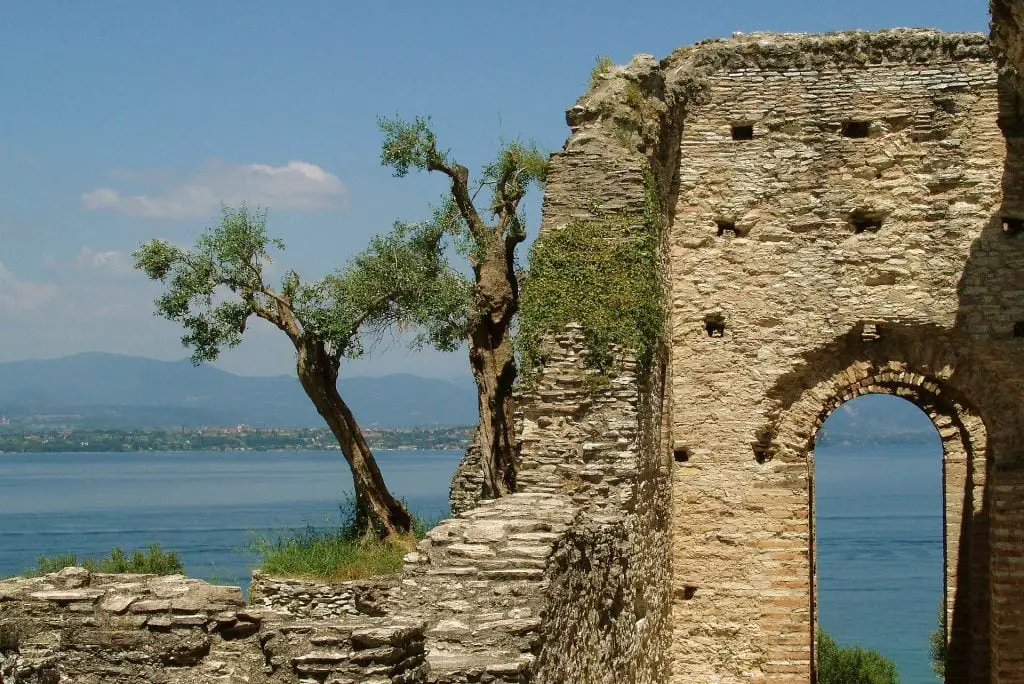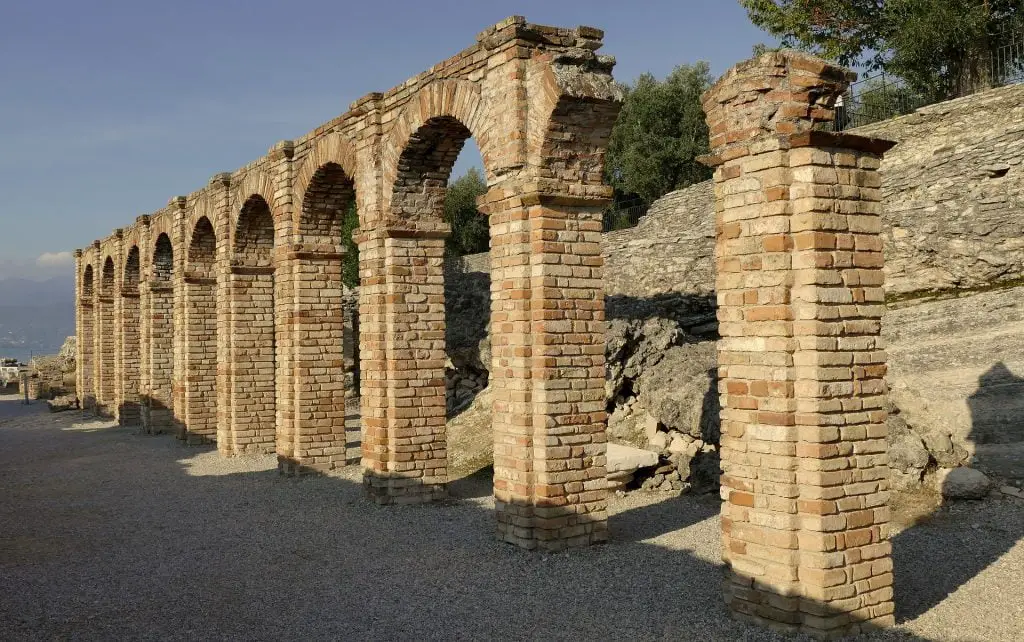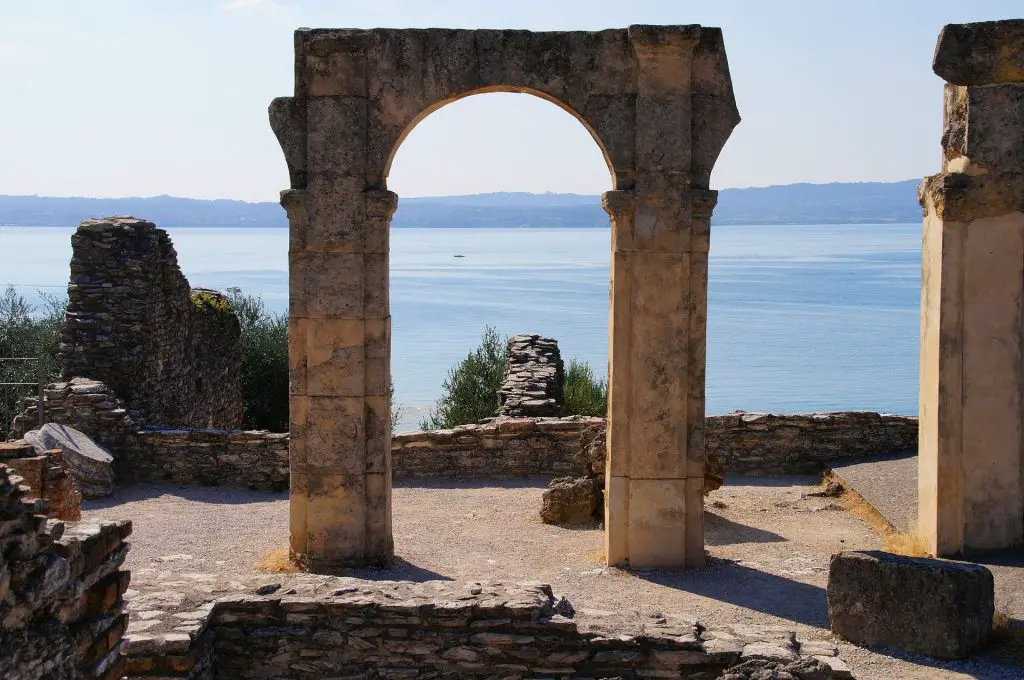The Roman villa or Italian Grotto di Catullo is a Roman excavation at the far end of the Sirmione headland on the southern shore of Lake Garda. The former Roman villa with thermal baths has partially collapsed nowadays, but it is a fantastic example of the old way of life and building technology.
Everywhere you can find old walls, columns, and paths on the vast complex. The parts not exposed are covered with mature olive trees.

Location of Grotte di Catullo
Lake Garda is the largest lake in Italy with a long history. The beautiful location and mild climate have attracted people to settle on the shores of the lake for thousands of years. Especially from the Roman era, there are impressive legacies that are now among the sights of the regions around Lake Garda.
One of the most impressive archaeological excavations from Roman times is the Grotte di Catullo. Word “grotte” actually means cave. But, a complex is incorrectly referred to as caves, which includes an old Roman villa with thermal baths. It is located at the end of the Sirmione headland on the southern shore of Lake Garda.
History of Grotte di Catullo
Legend says that the Roman poet Gaius Valerius Catullus lived in the Grotte di Catullo. The Roman Catullus lived in the 1st century BC, but very little is known about his life. Only his work of poems and epigrams has survived. The truth is that the poet, who is called Catull, never saw this villa.
The villa was actually built after his death. He spent his life in Verona and came to Sirmione to relax and recover. But, Catull dedicated some of his verses to Sirmione, its idyllic location, and its beauty.

As a prominent visitor to Sirmione, Catull had to serve as the namesake for the villa, which spread over an area of two hectares. The remains that are still visible today were probably used as a sanatorium, as researchers suspect. Not all parts of the ruins have been archaeologically examined. Initially, there was a large, magnificent villa, a thermal bath, and some outbuildings on the site.
Ancient thermal spa
Sirmione has hot thermal water that the Romans already knew and used. Roman lead pipes were discovered at a depth of 18 meters in the complex of the Catull caves, which led the healing water into the ancient thermal bath. The ruins are accessible to visitors and give a hint of the luxury of that time.
Also, there are old gnarled olive trees between the excavations, which look really awesome. One can almost assume that they were already present when the plant was built.


Museum
There is a small but very modern museum at the entrance to the former villa where the visitor can view many of the excavation finds. The museum shows the luxury and splendor of the original ancient complex. Films are shown on monitors that recreate the life of the time. The buildings are reconstructed in 3D animations.
Many interactive offers are also aimed at children. In addition to Italian and English, the information is also available in German. Besides the exhibitions from the Roman era, there is also a prehistoric and medieval exhibition.
Check out more articles about beautiful Sirmione:
- Sirmione travel guide
- Best pizza in Sirmione
- Best hotels in Sirmione
- Best Campsites near Sirmione Italy
- Parking in Sirmione
- Weekly market in Sirmione
- How to get to Sirmione?
- Sirmione in Lake Garda
- The sinking castle

